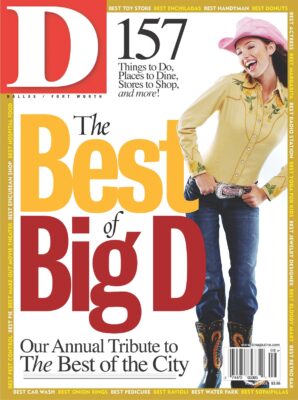Recently the Dallas Morning News made a great deal of fuss over a new report on racial disparities in Dallas. Whenever the News has talked about race lately, it has tended to go off the beam. So I thought it might be worthwhile to pay some extra attention to what the paper had to say.
“Dallas County appears to be failing,” an editorial proclaimed, in providing “equitable opportunities.” It bemoaned “startling gaps” in income and other measurements between whites and minorities in Dallas.
If this is true, it contradicts what demographers are saying. So I called the United Way, which had done the report for the Dallas Together Forum, and got my own copy. Yes, the report cited disparities between whites and minority groups. But wait. The report also noted huge gains by minorities in overcoming those disparities. For example, it reported that the median household income for blacks increased 53.4 percent between 1990 and 2000—ahead of the 46.1 percent increase for whites.
On the economic ladder, blacks may be at a lower rung, but they are climbing faster than whites. I found that fascinating. Why, I wondered, hadn’t the News reported it? Surely a major newspaper wouldn’t disregard a major finding, taken from the study it is reporting on, because it didn’t fit with its own assertion. Yet that’s what the News appeared to be doing.
Matters got more perplexing. The United Way was commissioned to study only Dallas County. The News didn’t ask a question that I thought was very pertinent: why just Dallas County? Why not the metropolitan area? When it comes to statistics, plucking facts out of context can cause major distortions.
“If we had done the study for ourselves,” says Dr. Jesse Gonzales at United Way, “we would have included Collin, Denton, and Rockwall counties because they form United Way’s organic community, where people live and work.”
Within that community, as it turns out, higher-earning blacks and Hispanics are moving from the city to the suburbs, just like their white counterparts. That’s one major reason the disparity continues inside Dallas County’s borders.
Between 2000 and 2001—the most recent year measured—Dallas suffered a net loss of 4,300 black residents. Urban specialists have found that as a city’s higher-earning residents move out to new suburban housing, new arrivals—poorer, less educated—move in to the older urban housing stock. This fits with data D Magazine first published two years ago in our special report, Race, Ethnicity, and Class in Dallas.
Nearby suburbs have seen an explosion in upper-middle-class black and Hispanic home buying. Between 1990 and 2000, Arlington, for example, saw an increase from 243 black households earning $100,000 or more (in 2000 dollars) to 1,209. Plano went from 212 to 875. That’s 398 and 313 percent, respectively, in two suburbs.
You’d think the News would celebrate these hard-working, achievement-oriented citizens. Instead, the paper doesn’t seem to know they exist.
The way the News selectively presents some facts while ignoring others could lead one to believe that it is promoting an agenda. After all, this is the same newspaper that recently told four new trustees of Parkland Hospital they had to resign, for no better reason than they are white. (By the same analysis, most members of the News’ editorial board and board of directors will need to resign, too.)
We report on another major lapse at the News on p. 27.
The News says it wants to be a serious newspaper. What I can’t figure out is how lazy reporting and sloppy reasoning are supposed to make it one.
Get our weekly recap
Brings new meaning to the phrase Sunday Funday. No spam, ever.
Related Articles

Hockey
What We Saw, What It Felt Like: Stars-Golden Knights, Game 3
A close final score masks a dominant performance.
By Sean Shapiro and David Castillo

Basketball
What We Saw, What It Felt Like: Mavs-Clippers Game 3
Little brother no more.
By Iztok Franko and Mike Piellucci

Local News
In a Friday Shakeup, 97.1 The Freak Changes Formats and Fires Radio Legend Mike Rhyner
Two reports indicate the demise of The Freak and its free-flow talk format, and one of its most legendary voices confirmed he had been fired Friday.


